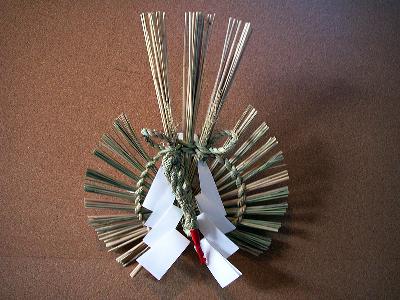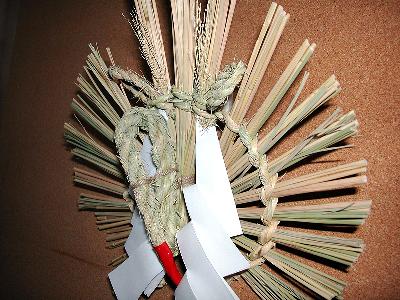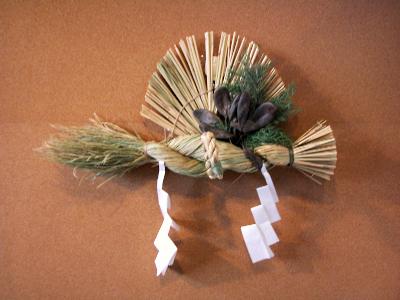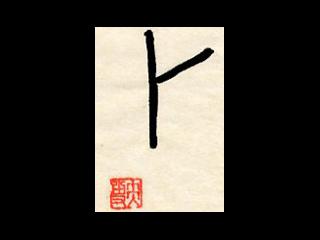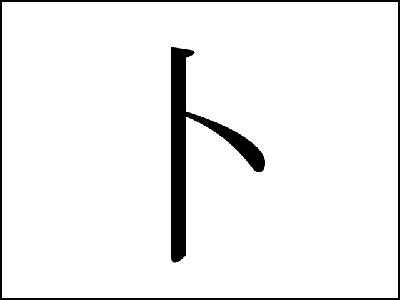|
Shimekazari is said to come from shimenawa rope which is used in shrines to mark the boundaries of a sacred area.
In welcoming the New Year, it is hung over the front of the house to mark it as a sacred space. It is also used as a lucky charm to prevent misfortune or evil spirits from entering.
In Kyuushuu, especially in the Fukuoka and Miyazaki regions, the crane is often used as a design on shimekazari. Radially spread bundles of straw are positioned to indicate the wings and tail of a crane and the part that represents the beak is often colored in red. In rare cases, shimekazari may also have a turtle design.
Since ancient times, both the crane and the turtle have been valued as animals that bring good fortune and a long life. Their design has been a fixture at celebratory occasions. Pine, bamboo and plum trees as well as treasure ships are also added to the decoration of the shimekazari, combining, strong wishes for both a happy New Year and a long, healthy life.
In welcoming the New Year, it is hung over the front of the house to mark it as a sacred space. It is also used as a lucky charm to prevent misfortune or evil spirits from entering.
In Kyuushuu, especially in the Fukuoka and Miyazaki regions, the crane is often used as a design on shimekazari. Radially spread bundles of straw are positioned to indicate the wings and tail of a crane and the part that represents the beak is often colored in red. In rare cases, shimekazari may also have a turtle design.
Since ancient times, both the crane and the turtle have been valued as animals that bring good fortune and a long life. Their design has been a fixture at celebratory occasions. Pine, bamboo and plum trees as well as treasure ships are also added to the decoration of the shimekazari, combining, strong wishes for both a happy New Year and a long, healthy life.
| [+ADDRESS] | 
|

